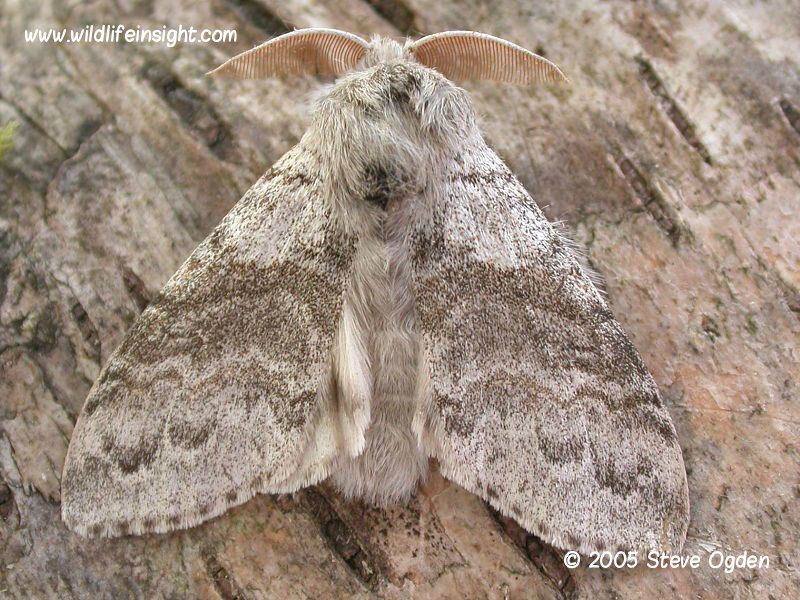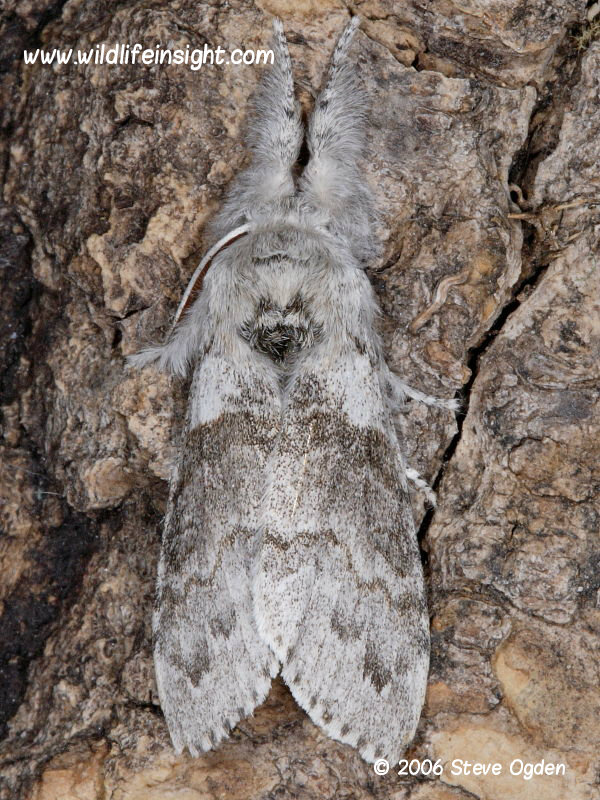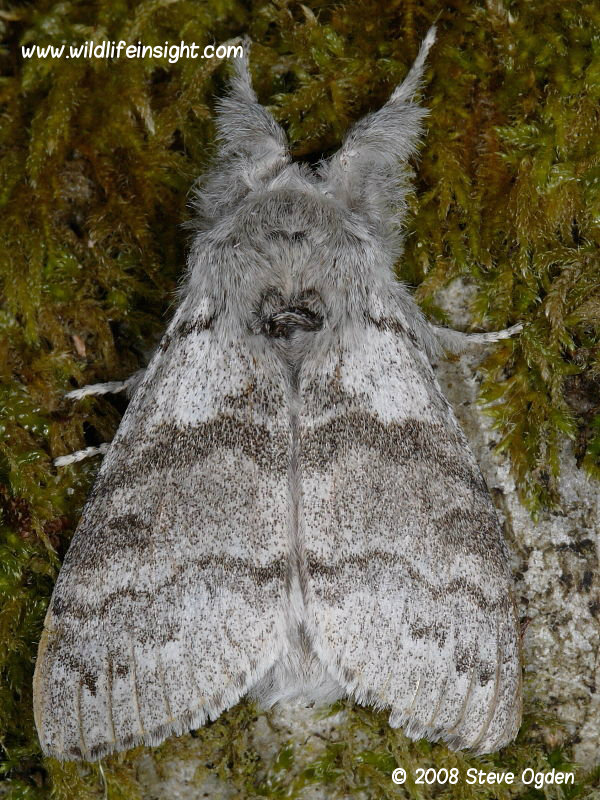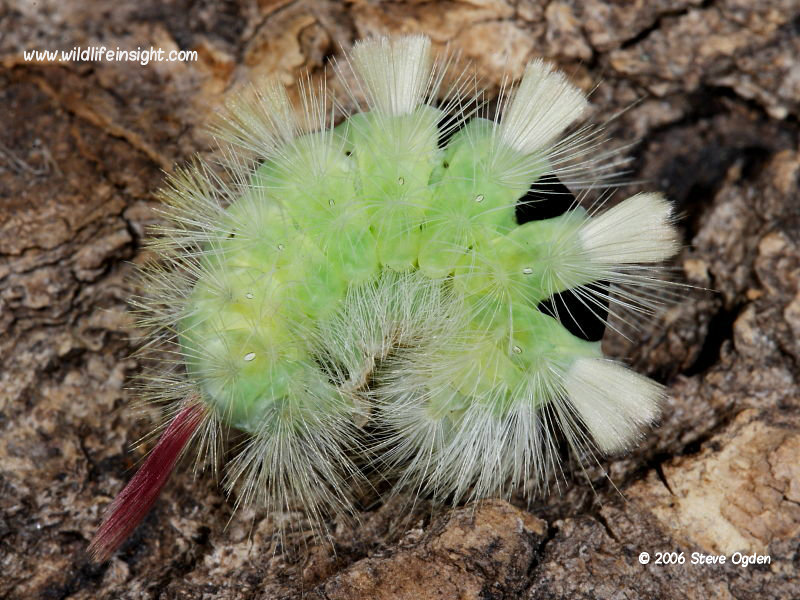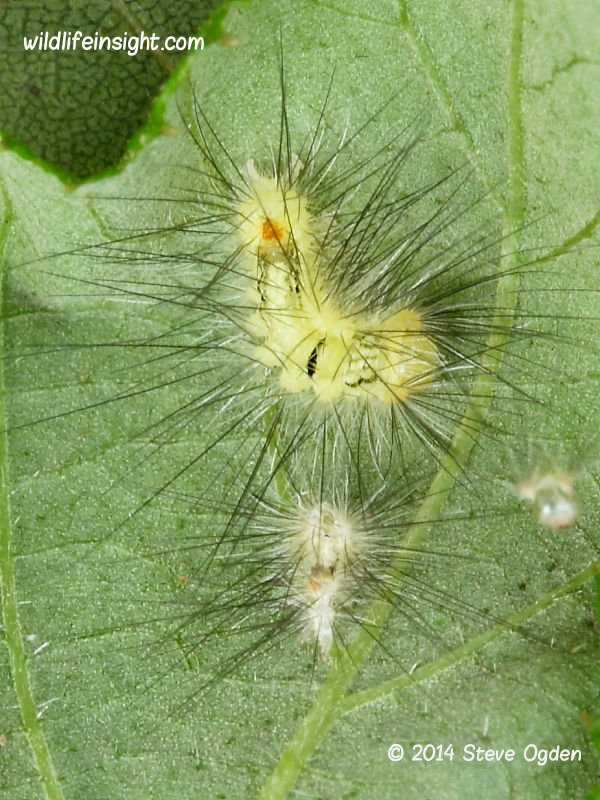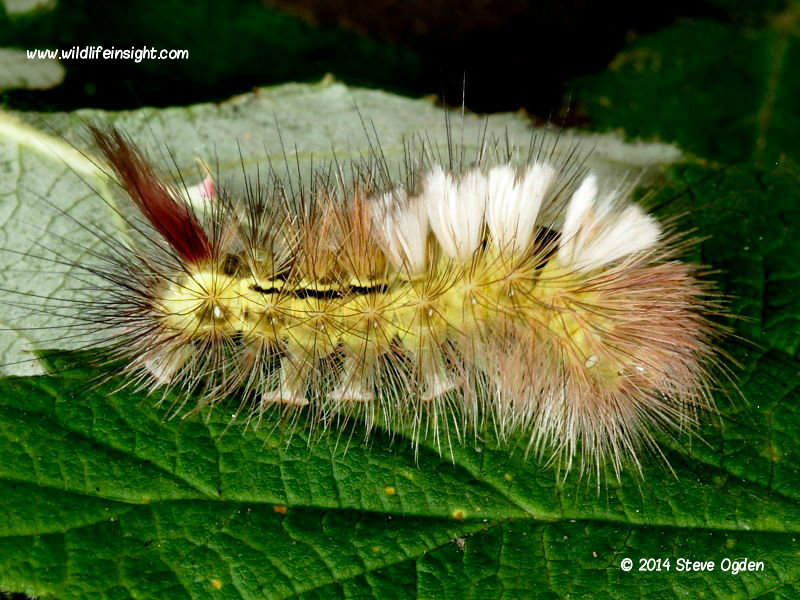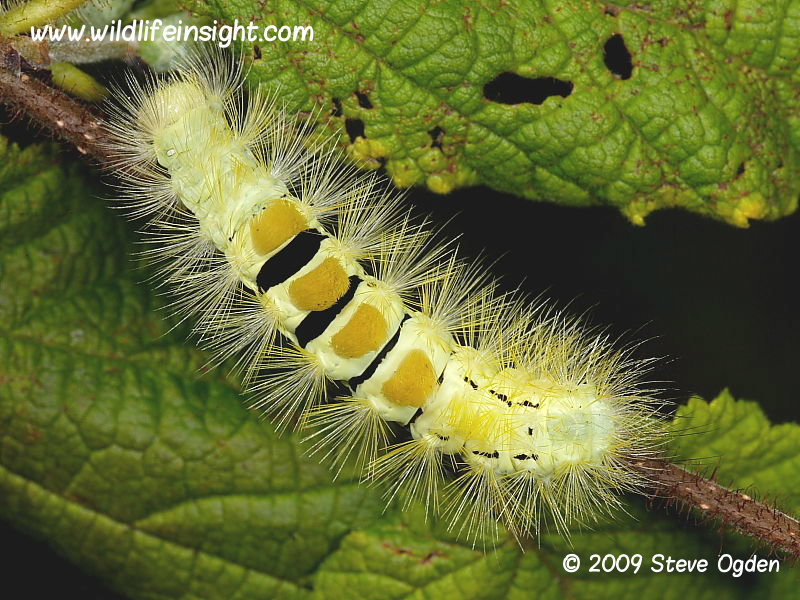Pale Tussock Moth (Calliteara pudibunda) – adult
The Pale Tussock moth is a common species throughout much of the southern half of England, becoming scarcer in northern regions.
The species is also recorded in Northern Ireland and throughout much of continental Europe.
They are found in a wide variety of habitats including gardens, woodlands and along countryside hedgerows.
The moths are nocturnal and fly in a single generation from late spring to early summer when mainly the males in are attracted to light.
Males have a wing length of up to 22mm and have comb-like antennae.
When settled the moths extend their hairy front legs out in front.
The females have an approximate forewing length of 30mm and are larger and paler than the males.
Eggs of the Pale Tussock Moth (Calliteara pudibunda).
The species is single brooded with eggs being laid in batches on the leaves of the larval foodplant between May and June.
The eggs hatch within 2-3 weeks.
The caterpillars are slow growing with many not fully grown until late September
Caterpillar of the Pale Tussock Moth (Calliteara pudibunda)
The caterpillars are between 40-45mm in length and feed on a wide variety of deciduous trees as well as many other plants such as bramble and hops.
They were once commonly found on hops growing in the south east of England where the pickers referred to them as Hop Dogs. The hairs of the caterpillars were reputed to have caused quite severe allergic skin reactions among the pickers.
Another common species of caterpillar with hairy dorsal tussocks that may also be found in similar habitat is the Vapourer Moth caterpillar.
The caterpillar of the Dark Tussock moth has a more localised distribution and is mostly found on more open moorland and heathland habitat.
Other caterpillars are featured in the moth Caterpillar galleries , the Butterfly caterpillar galleries and other hairy caterpillars.
The body is commonly a greeny yellow but may vary depending on the colour of the hairs.
The colour of the hairs is very variable with white, yellowy white, brown, reddy brown, pink and even mauve specimens recorded as featured below.
Bold black marks are revealed between the dorsal tufts when the body is stretched.
The single tail tuft is most frequently a browny pink but may reflect the colour of the caterpillar.
Although the tail tuft is often a helpful identification feature it may be absent from some specimens.
The four, tussocky, dorsal tufts are most frequently a contrasting white, brown or yellow but may also reflect the colour of the other hairs.
The caterpillars are most commonly come across in late August and September when they’re fully grown and wandering in search of somewhere to pupate.
Other coloured forms of Pale Tussock caterpillars
Featured below are more sightings showing the wide variety of different coloured forms of Pale Tussock caterpillars from the British Isles.
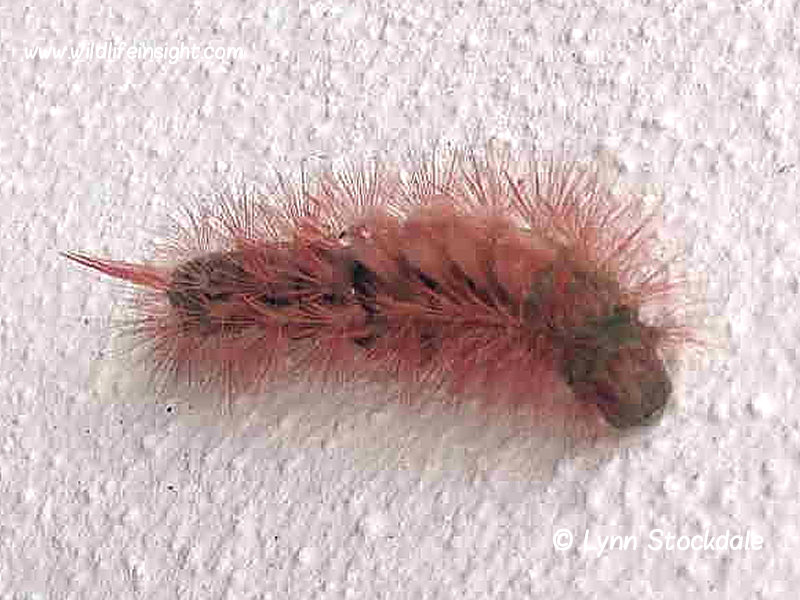
Other development stages (instars) of Pale Tussock caterpillars
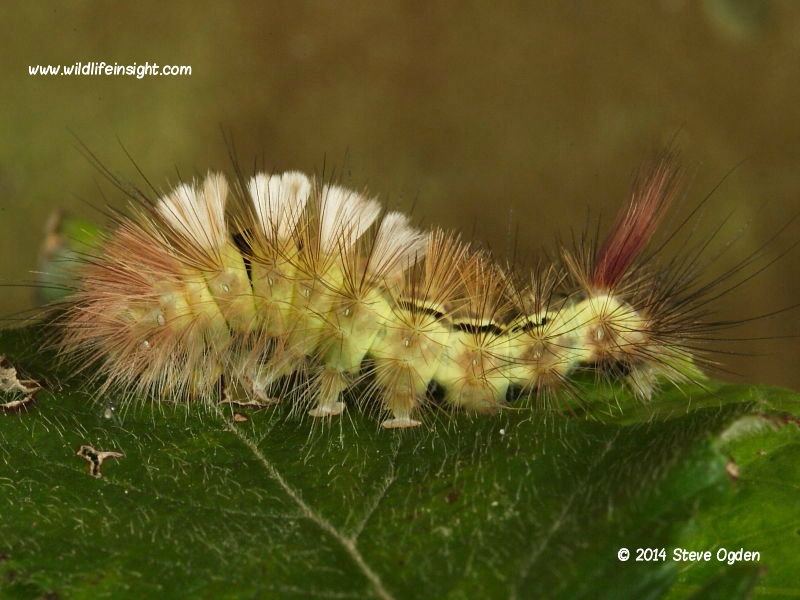
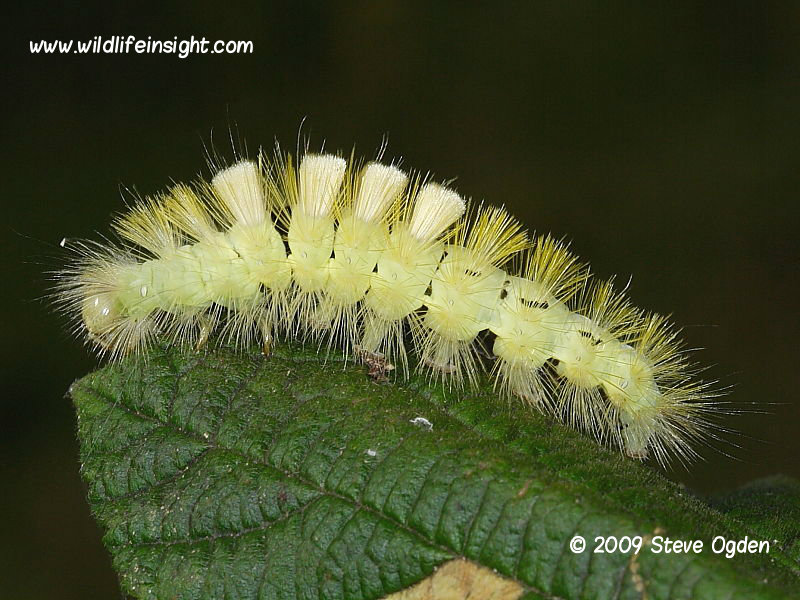
Pupating Pale Tussock caterpillar
The caterpillars pupate in leaf litter and overwinter as a cocoon.
The Pale Tussock caterpillar is easily reared but must be overwintered as a pupa.
More information is available on How to rear caterpillars.
Recommended reference books
- The Colour Identification Guide to Caterpillars of the British Isles – Jim Porter.
- Field Guide to the Moths of Great Britain and Ireland – Waring, Townsend and Lewington.
- Moths of the British Isles – Bernard Skinnner.
- Provisional Atlas of UK’s Larger Moths – Randle, Fox and Parsons.
